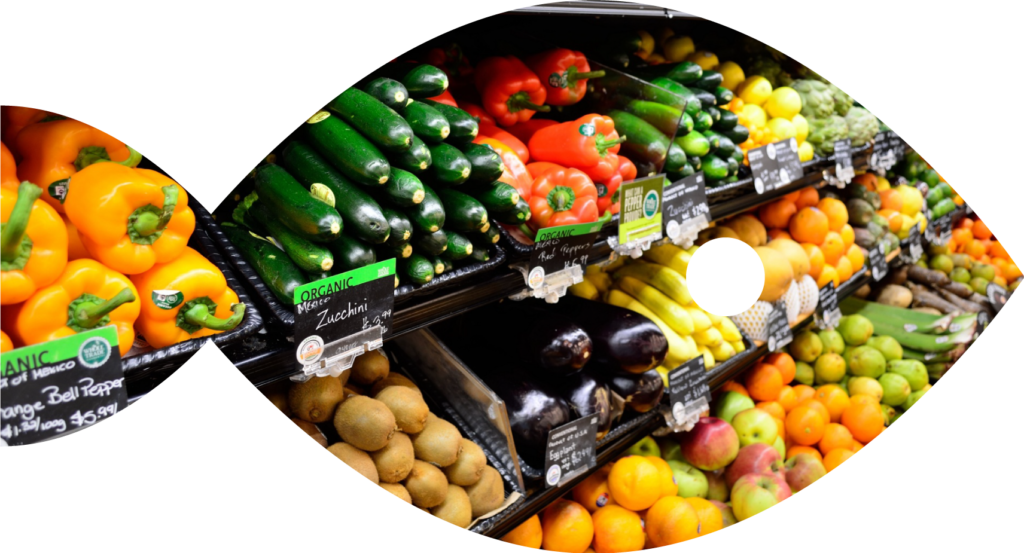Checking in on our plant-based seafood collider
In a first of its kind effort, the SCET is leveraging its innovation collider to work on the environmental problems caused by overfishing. The ocean is often thought of as harboring a nearly endless supply of seafood for humans. At one point this may have been practically true — but as our worldwide population continues to grow, and demand for seafood rises with it, we are now facing a world where many fish populations are already on the verge of collapse.
To help facilitate innovative solutions to meet the high demand for seafood in a sustainable way, the SCET is partnering with SeaCo and the Good Food Institute (website | newsletter) to develop plant-based seafood alternatives. (The SCET is also working in tandem to create other meat alternatives in its plant-based meat challenge lab course.)
The Challenge
Develop a roadmap for a company that sells plant-based seafood that tastes, smells, and cooks like fish.
Eight UC Berkeley teams formed to meet this challenge. Each team is working to meet the overall goal of creating a plan to develop plant-based fish, but each group is also focusing on specific types of seafood such as salmon, bass, tuna, etc. as different types of seafood have different flavors, textures, and fat content.
Last week, we checked in with the teams to assess their challenges, successes, and roadblocks on the project before the final presentations in May.
What’s it made of?
Seafood tastes good because of a subtle mix of fats, proteins, and other flavors.
Fat
Seafood has become a popular health food because of its high proportion of omega-3 fatty acids, or “good fat.” Omega-3 fatty acids lower inflammation and help prevent heart disease, depression, dementia, and arthritis. How would the teams re-produce this vital element in engineering plant-based seafood?
One approach advocated for by some teams is to use certain forms of algae that excrete eicosapentaenoic acid or EPA, one of the two kinds of omega-3 fatty acids that fish contain. One group suggested that algae may be genetically-modified in order to better emulate the high fat contents of fish like salmon and sea bass. While using algae would help plant-based seafood retain some of its health benefits, this approach may be too expensive and use too much water.
Other groups sought to add omega-3 fat content by adding more traditional sources of this healthful fat, by adding nuts, seeds, and beans such as flax, chia, and walnuts.
Traditionally thought of as a protein, soybeans and its products (such as soy flour) also contain a good amount of fat — though, some groups seemed to be a bit skeptical in relying too much on soy as it is already overeaten.
Protein
We mention algae and soy above, which are good sources of protein as well as fat.
Another important element in the composition of seafood is collagen, connective tissue that aids in creating texture and provides some protein. Collagen helps create the signature flaky quality of much seafood and is important for creating the melts-in-your-mouth feel that consumers enjoy.
Still other groups are working to be more sophisticated with engineering plant-based protein, by using software such as BLAST, a bioinformatics tool that uses algorithms to compare amino acid sequences, which they could use to compare plant-based protein with their animal-derived counterpart.
Getting the taste right
Perhaps, the most important part of creating plant-based fish (or any food product in general) is getting the taste right. Taste itself is critical here, but the way it smells and looks also contributes to the perception of how it tastes.
Taste
Having that “fishy taste” was more important for some groups than others. For example, Tilapia doesn’t have a very strong flavor and getting the texture right is arguably more important for this popular fish variety. In contrast, salmon has a strong fish flavor and any plant-based replica would need to get this part right in order to properly market it as “salmon.”
The teams had both traditional and next-generation ideas on how to get the flavor right.
Some ingredients that can emulate a fishy flavor are readily available such as ginger, seaweed, lemon, sea salt, MSG (umami), mushrooms, potato, and cucumber.
Other teams suggested more analytical approaches to understand how to best create seafood and fishy flavors. For example, one team suggested using an electronic tongue to analyze the unique fingerprint of each seafood taste and using that as a benchmark for comparing engineered flavors in order to get as close as possible to the real thing.
Smell
Seafood has a distinctive smell that is a critical part of the eating experience. Teams are taking this element seriously, and some wish to use advanced methods in order to make sure to get it right.
Besides using readily available ingredients to create a fishy smell (e.g. seaweed), at least two teams wish to employ an electronic nose (e-nose) to create profiles of different types of seafood. Similar to the e-tongue mentioned above, the profiles would then be used as benchmarks to compare to plant-based seafood creations to measure if the smell is right. Still another technique for understanding smell is using gas chromatography to analyze the chemical compounds that are creating the smell.
Melts in your mouth
Getting the texture right was a big focus for every team. Creating a plant-based seafood product with a uniform texture (think tofu) is not going to cut it if the solutions are really hoping to displace seafood. A light and flaky texture that melts in your mouth is one of the signature elements of many seafoods.
We mention collagen above as a potential source of protein, but even more critical is its role in creating the appropriate texture for many seafoods. But to replace collagen is not easy. Gelatin is a readily available substitute, but is not plant-based. Some possible ideas for replacing this vital component include using gelatinous and fibrous foods such as agar, algae, seawood, and lychee. One group also suggested the novel idea of using yeast to make a synthetic form of gelatin.
Other groups sought to fully investigate seafood texture by using advanced tools such as electron microscopes and hyperspectral imaging cameras. With the hyperspectral imaging camera, for example, the team could capture images of small areas of fish, and then use data analysis tools to find how well this correlates with engineered plant-based seafood. This process will be faster and less destructive than using the industry-standard Texture Analyzer.
Another group sought to create an interesting texture by creating a mold that would essentially look like a brick pattern, with agar acting as the “brick” and a Textured Vegetable Protein (soy) and algae mix acting as the “mortar” holding it together.
Coming soon: Final presentations
The teams have made great progress in a short amount of time on this collider project, and the world is definitely closer to making delectable, savory plant-based seafood alternatives a real thing.
Please join us on May 3rd 4-6pm for the final presentations at SCET to see what the future of seafood will look like.


